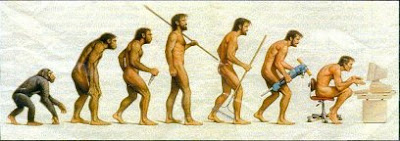
Discovering the Body’s Wisdom – Mirka Knaster
If you like this blog you’ll love this book . Billing itself as a “Comprehensive guide to more than fifty mind-body practices that can relieve pain, reduce stress, and foster health, spiritual growth and inner peace.” Discovering the Body’s Wisdom by Mirka Knaster reads like a text book of everything I’m into and is a wonderfully clear introduction to the group of related disciplines that the author calls “bodyways” – covering martial arts, postmodern dance, “alternative” therapies and bodywork.
Many of the activities that take an integral/holistic view of people have developed in isolation despite their similarities and are only now coming together. Some call them “body awareness disciplines”, others ”somatic practices”, others bodymind practices. A down-to-earth tag I’ve been playing with of late is “mindful exercise,” as mindfulness is a word that seems to be passing from Buddhism into the mainstream.
The opening chapters give a clear account of the relevant theory. For experienced practitioners this part might seem basic, but serves as a good introduction for the uninitiated. The benefits of bodyways are discussed along the body mind spilt and subsequent alienation in Western culture that has made them a necessity IMHO. Addressing this misunderstanding and viewing the body as a domain of emotion and consciousness , and a source of pleasure, healing and wisdom is the books central theme.
Mirka Knaster also offers practical advice to the student, on how to choose an art for example and what to do if there’s sexual misconduct. I would have also like to have seen a similarly practical section for teachers on promotion, ethics, managing a class, teaching, etc, but maybe that’s a whole different book.
Discovering The Body’s Wisdom is divided into chapters on western structural and functional approaches, e.g. Rolfing and Feldenkrais (both of which were influences on my teachers which I’ll be exploring in the near future), and therapies such as massage, Bowen Technique and Craniosacral therapy. The book then moves on to western movement arts such as Contact Improvisation and Continuum. Next eastern systems of energy and movement are discussed, including shiatsu, tai chi and aikido. Finally convergence systems that integrate psychology with bodywork are mentioned. Holistics fits into this category.
Discovering the Body’s Wisdom has some serious breadth. I’ve spent the last few years travelling the world looking into this work and there were still some new arts for me here. Others martial arts and even meditation might have been included but it’s 408 pages long already. There seems a slight American bias to the book, though to be fair this is where a lot of new work comes from or flourishes. There are some aspects of US culture that I enjoy. When I started Holistics all my US (particularly West Coast) friends said, “Great, go do it! Be original, put yourself out there” while in more traditional England I got, “Are you sure? It probably won’t work,” “You’re just making this up?” and “Who do you think you are?” All good questions but a very different spirit.
Something I love about this book is that the Mirka Knaster’s researched the content personally and not just in the library – she’s speaking from real experience. Similarly for each art a suggested experience is given which the reader can try out. This book is very digestible and gives the impression of a living collage, rather than just words on a page. With colour illustration, which would really suit its vitality, it could make a great herbal tea table book.
Amazingly this book was written 12 years ago and is still ahead of its time in many ways. It was recommended to be by Paul Linden whose “Being In Movement – Mindbody Training®” concludes the book. Along with his work and that of Richard Strozzi Heckler’s, Discovering The Body’s Wisdom will be required reading for those I train to teach Holistics. I recommend this book like I’d recommend breathing and loving your mum. Read it, do it, be it.